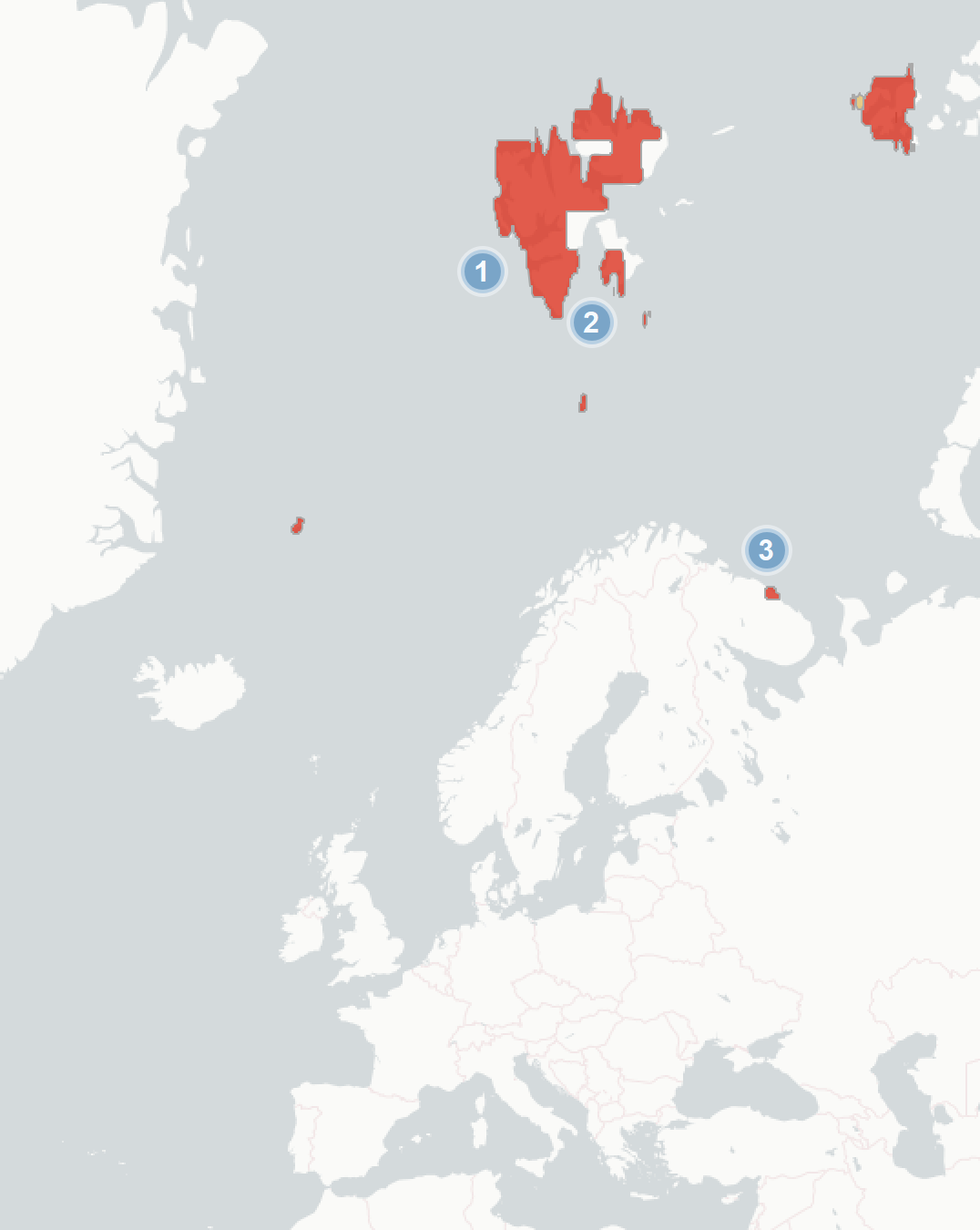Little Auk (Alle alle): vulnerability to climate change
Evidence for exposure
Potential changes in breeding habitat suitability:
-
Current breeding area that is likely to become less suitable (94% of current range)
-
Current breeding area that is likely to remain suitable (6%)
-
Current breeding area that is likely to become more suitable (0%)
Current impacts to Little Auks attributed to climate change:
-
Negative Impact: Warmer temperatures correlate with longer foraging trips and lower little auk productivity, most likely due to decreased prey availability.
-
Neutral Impact: Little auks are breeding earlier in correlation with warmer temperatures, so far no negative consequence has been observed
-
Negative Impact: Extreme storms during the non-breeding season have led to mass mortality of little auks (‘wrecks’)
Predicted changes in key prey species:
No key prey assessment was carried out for this species.
Climate change impacts outside of Europe
-
Loss of sea ice and new prey items due to climate change has led to increased little auk breeding success in Greenland
Sensitivity
-
Little auks expend a great deal of energy in flight, and their chicks also have very high energy demands. This means that auks must focus on high energy prey and are sensitive to even small changes in high-energy prey availability.
-
Little auks on Svalbard may rely on environmental signals to time breeding events, in particular the timing of snow melt. This theory is not confirmed, but is supported by recent observed changes in phenology. If there is a strong reliance on such environmental cues, it may lead to trophic mismatch with prey species in the future.
-
Little auks are dependent on a few species of copepods throughout the year, any changes in availability or range of these species is likely to have a significant impact on little auks
-
Little auks congregate in large numbers in a relatively small area in the non-breeding season in the Atlantic. Any negative impact in this area is likely to have severe consequences for little auk populations
-
Little auks are known to be sensitive to climate change, and have suffered regional extinctions. They have previously suffered range contractions and local extinctions in the 19th-20th Century most likely because of global warming (though historical changes were not primarily anthropogenic). As a result it has lost much of its previous range in Iceland and Greenland.
-
Little auk populations are large, but many are poorly monitored and exposed to multiple potential pressures. Impacts may be difficult to identify and conservation is likely to be difficult to carry out.
Adaptive capacity
-
Little auks in Svalbard and Greenland have plastic foraging behaviour that has helped them compensate for local changes in prey availability and sea ice. In some areas they seem to be benefiting from climate change. However this plasticity likely has a limit and projections suggest they can only compensate to a certain extent.
